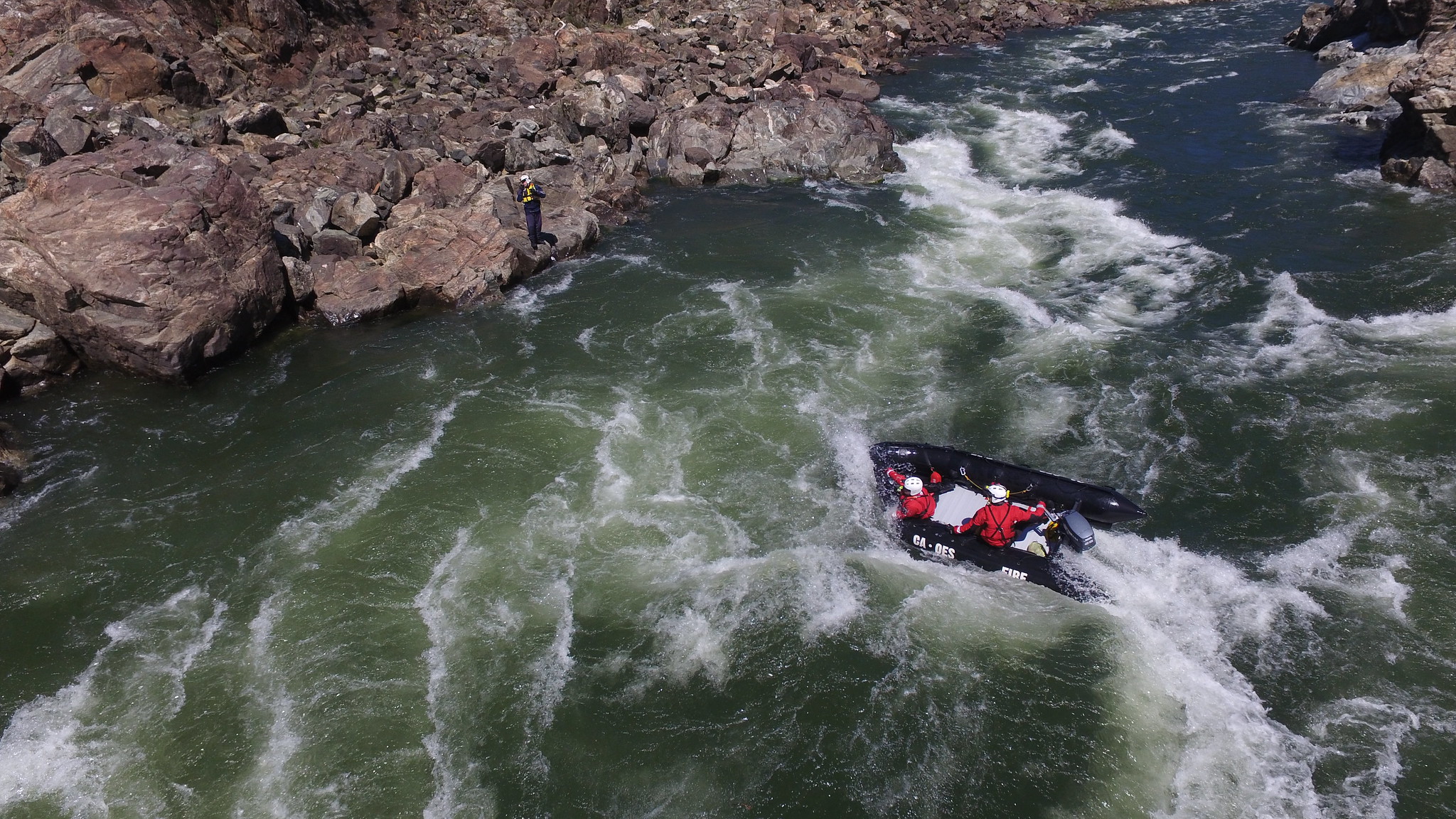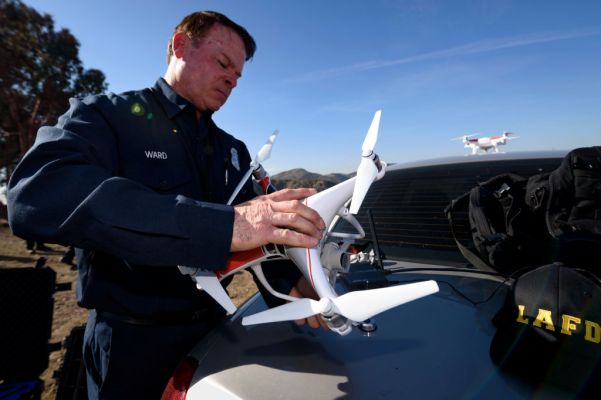As it looks to modernize its operations, the Los Angeles Fire Department is turning to a number of new technologies, including expanding its fleet of drones for a slew of new deployments.
One of the largest fire departments in the U.S., next to New York and Chicago, the LAFD has a budget of roughly $691 million, employs more than 3,500 and responded to 492,717 calls in 2018.
The department already has a fleet of 11 drones to complement its fleet of 258 fire engines, ambulances and helicopters.
However, Battalion Chief Richard Fields, the head of the department’s Unmanned Aerial Systems program, would like to see that number increase significantly.
Los Angeles has become an early leader in the use of drones for its firefighting applications thanks in part to an agreement with the Chinese company DJI, which the department inked back in April.
At the time, the Chinese drone manufacturer and imaging technology developer announced an agreement to test and deploy DJI drones as an emergency response preparedness tool. The company called it one DJI’s largest partnerships with a fire-fighting agency in the U.S.
“We are excited to be strengthening our partnership with the LAFD, one of the nation’s preeminent public safety agencies, to help them take advantage of DJI’s drone technology that has been purpose-built for the public safety sector,” said Bill Chen, Enterprise Partnerships manager at DJI, in a statement at the time. “Through our two-way collaboration, DJI will receive valuable insight into the complexities of deploying drones for emergency situations in one of the most complex urban environments in the nation.”
Now, roughly five months later, the program seems to have been successful enough that Battalion Chief Fields is looking to double the fleet.
“Our next iteration is to start using our drones to assist our specialized resources,” said Fields. Those are firefighters and support crews that deal with hazardous materials, urban search and rescue, marine environments and swift water rescues, Fields said.

The LAFD Swift Water Rescue Team. Photo courtesy of Flickr/ LAFD Mike Horst
The technologal demands of the fire department extend beyond the drone itself, Fields said. “There are a lot of technologies that allows us to make the drone more versatile… the most valuable tool isn’t the drone; it’s the sensor.”
So far, the most useful application has been using infrared technologies to balance what’s visible and combine it with the heat signatures the sensors pick up.
Training to become a drone pilot for the LAFD is particularly intense, Fields says. The typical pilot will get up to 80 hours of training. “Our training is nation-leading. There’s nothing out there in the commercial market that beats it,” according to Fields.
For now, the entire LAFD fleet is composed of DJI drones, something that has given military and civilian officials pause in the past few years.
Concerns have been growing over the reliance on Chinese technology in core American infrastructure, extending from networking technology companies like Huawei to drone technology developers like DJI.
Back in 2018, the Department of Defense issued a ban on the acquisition and use of commercial drones, citing cybersecurity vulnerabilities. The ban came a year after officials from the Department of Homeland Security and members of Congress called out DJI specifically for its potential to be used by the Chinese government to spy on the United States.
However, the rule isn’t set in stone, and many branches of the military continue to use DJI drones, according to a September Voice of America News report.
In Los Angeles, Fields says he takes those concerns seriously. The department has worked closely with regulators and advocacy groups like the American Civil Liberties Union to craft a strict policy around what gets done with the data the LAFD collects.
“The way that we establish our program is that the drone provides us with our real-time situational awareness,” said Fields. “That helps the incident commander get a visual perspective of the problem and he can make better decisions.”
The only data that is recorded and kept, says Fields, is data collected around brush fires so the LAFD can do a damage assessment, which can later be turned into map layers to keep records of hotspots.
As for data that could be sent back to China, Fields says that any mapping of critical infrastructure is done without connecting to the internet. “It’s being collected on the drone and 90% of that information is how the drone is operating. There is some information of where the drone is and how it is and the [latitude] and [longitude] of the drone itself… That’s the data that’s being collected,” Fields says.
From Fields’ perspective, if the government is so concerned about the use of drones made by a foreign manufacturer, there’s an easy solution. Just regulate it.
“Let’s come up with a standard. If you use them in a federal airspace these are the check marks that you have to pass,” he says. “Saying that DJI drones are bad because they come from China [and] let’s throw them all out… that’s not an answer either.”
